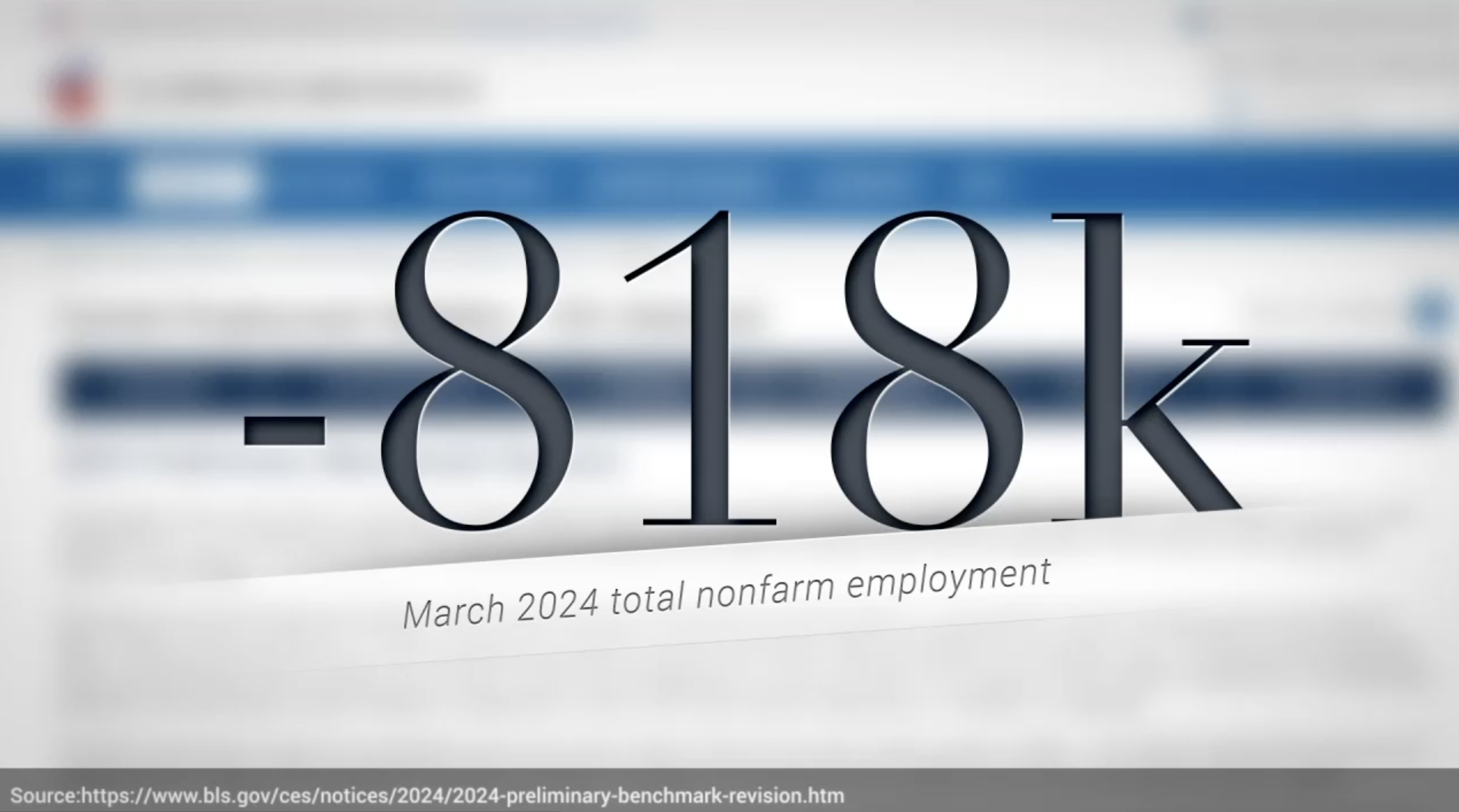Weekly Market Commentary
Markets Rebound Amid Job Data Revision and Rate Cut Speculation
Posted on August 29, 2024
Last week, the major markets showed gains across the board. As the week went on, the ongoing rebound caused the July and August drop to fade into the background. Small and mid-cap stocks did especially well, with their gains nearly doubling those of large-cap stocks. At the sector level, 10 of the 11 segments saw gains of more than a percentage point. Energy was the lone losing sector, which experienced a small loss of half a percent.
Last week saw several important economic events. One key event was the release of the 2024 Preliminary Benchmark Revision by the Bureau of Labor Statistics (BLS). This report revealed that job estimates from March of this year were inflated by 818,000 jobs. To put this into perspective, this is the second-largest downward revision ever recorded.
Attention then shifted to Jackson Hole, where Federal Reserve Chairman Jerome Powell was scheduled to give a speech on Friday. Market Participants wondered how this new employment data would impact the Fed’s decision. Powell made it clear that a rate cut was likely, saying,
“The time has come for policy to adjust. The direction of travel is clear, and the timing and pace of rate cuts will depend on incoming data, the evolving outlook, and the balance of risks. We will do everything we can to support a strong labor market as we make further progress toward price stability. With an appropriate dialing back of policy restraint, there is good reason to think that the economy will get back to 2 percent inflation while maintaining a strong labor market. The current level of our policy rate gives us ample room to respond to any risks we may face, including the risk of unwelcome further weakening in labor market conditions.”

Major Markets |
YTD as of 08/23/2024 | ||
| Nasdaq |  |
||
| Dow Jones Industrial |  |
||
| S&P 500 |  |
||
| MSCI World |  |
||
| MSCI EM |  |
||
| Russell 2000 |  |
||
| Bar US Agg Bnd |  |
||
 |
|||
S&P Sectors |
|
|||||
| Comm. Services |  |
|||||
| Cons. Discretionary |  |
|||||
| Cons. Staples |  |
|||||
| Energy |  |
|||||
| Financials |  |
|||||
| Health Care |  |
|||||
| Industrials |  |
|||||
| Info. Technology |  |
|||||
| Materials |  |
|||||
| Real Estate |  |
|||||
| Utilities |  |
|||||
 |
||||||
| Agent/Broker Dealer Use Only | ||||||
Powell’s speech in turn increased the chances of a rate cut, with the CME Group’s Fedwatch tool showing a 68% probability of a 25-basis point cut at the September meeting. Furthermore, the CME Group placed odds at 32% for a 50-basis point cut. From there, it’s expected that the final two Federal Open Market Committee (FOMC) meetings of the year will result in further rate cuts, with the Fed Funds rate likely ending up in the 4.25% to 4.50% range to close out the year.
The yield curve dropped in response, with the 2-year yield falling by up to 16 basis points.
https://www.bls.gov/ces/notices/2024/2024-preliminary-benchmark-revision.htm
Concerned about inflation? Check out our Tips to Reduce Risks In Case of Recession.
| The S&P 500® Index is a capitalization index of 500 stock-designed to measure performance of the broad domestic economy through changes in the aggregate market value of stock representing all major industries. https://us.spindices.com/indices/equity/sp-500 The Dow Jones Industrial Average® (The Dow®), is a price-weighted measure of 30 U.S. blue-chip companies. The index covers all industries except transportation and utilities. https://us.spindices.com/indices/equity/dow-jones-industrial-average The NASDAQ Composite Index measures all NASDAQ domestic and international based common type stocks listed on The NASDAQ Stock Market. Today the NASDAQ Composite includes over 2,500 companies, more than most other stock market indexes. Because it is so broad-based, the Composite is one of the most widely followed and quoted major market indexes. https://indexes.nasdaqomx.com/Index/Overview/COMP The MSCI World Index, which is part of The Modern Index Strategy, is a broad global equity benchmark that represents large and mid-cap equity performance across 23 developed markets countries. It covers approximately 85% of the free float-adjusted market capitalization in each country and MSCI World benchmark does not offer exposure to emerging markets. The MSCI Emerging Markets (EM) Index is designed to represent the performance of large- and mid-cap securities in 24 Emerging Markets countries of the Americas, Europe, the Middle East, Africa and Asia. As of December 2017, it had more than 830 constituents and covered approximately 85% of the free float-adjusted market capitalization in each country. https://www.msci.com/ The S&P GSCI Crude Oil index provides investors with a reliable and publicly available benchmark for investment performance in the crude oil market. https://us.spindices.com/indices Companies in the S&P 500 Sector Indices are classified based on the Global Industry Classification Standard (GICS®). https://us.spindices.com/indices |






